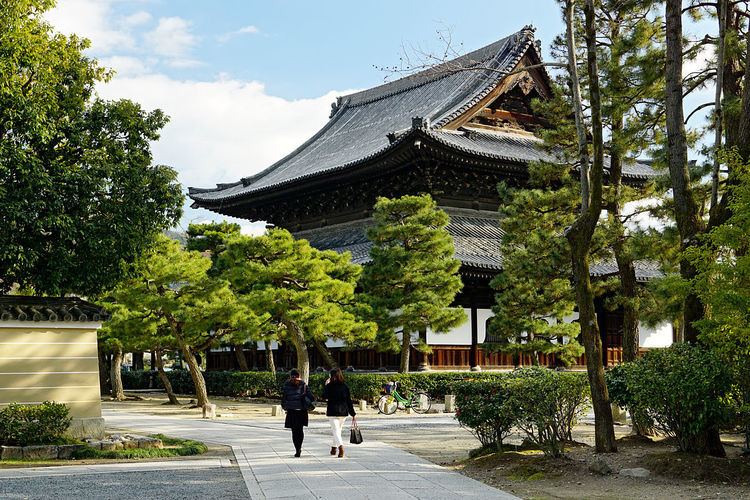Phone +81 75-561-6363 | Completed 1202 Founded 1202 | |
 | ||
Deity Shaka Nyorai (Śākyamuni) Address Japan, 〒605-0811 Kyoto Prefecture, Kyoto, Higashiyama Ward, 大和大路通四条下る小松町584 Similar Kōdai‑ji, Yasaka Shrine, Tōfuku‑ji, Chion‑in, Kiyomizu‑dera | ||
Kennin ji zen temple kyoto city
Kennin-ji (建仁寺) is a historic Zen Buddhist temple in Higashiyama, Kyoto, Japan, near Gion, at the end of Hanami Lane. It is considered to be one of the so-called Kyoto Gozan or "five most important Zen temples of Kyoto".
Contents
Places to go kennin ji temple
History
Kennin-ji was founded in 1202 CE and claims to be the oldest Zen temple in Kyoto.
The monk Eisai, credited with introducing Zen to Japan, served as Kennin-ji's founding abbot and is buried on the temple grounds. For its first years the temple combined Zen, Tendai, and Shingon practices, but it became a purely Zen institution under the eleventh abbot, Lanxi Daolong (蘭渓道隆, Rankei Dōryū) (1213–1278).
The Zen master Dōgen, later founder of the Japanese Sōtō sect, trained at Kennin-ji. It is one of the Rinzai sect's headquarter temples.
Architecture
When first built, the temple contained seven principal buildings. It has suffered from fires through the centuries, and was rebuilt in the mid-thirteenth century by Zen master Enni, and again in the sixteenth century with donations of buildings from nearby temples Ankoku-ji and Tōfuku-ji.
Today Kennin-ji's buildings include the Abbot's Quarters (Hōjō), given by Ankoku-ji in 1599; the Dharma Hall (Hatto), built in 1765; a tea house built in 1587 to designs by tea master Sen no Rikyū for Toyotomi Hideyoshi; and the Imperial Messenger Gate (Chokushimon), said to date from the Kamakura period, and still showing marks from arrows. It also has 14 subtemples on the Kennin-ji precincts and about 70 associated temples throughout Japan.
In 2002, the architectural setting was enhanced by a dramatic ceiling painting of two dragons by Koizumi Junsaku (1924–2012). The piece was first painted in the sport hall of a former Elementary school. This bold artwork was installed to commemorate the temple's 800th anniversary. The dragon symbolises the rain of Buddhist teachings. The Shōkoku-ji in Kyoto also features a dragon on the ceiling of its main hall.
Artworks
Kennin-ji contains notable paintings by Tamura Sōryū and Hashimoto Kansetsu. Fujin and Raijin, a pair of two-fold screens by Tawaraya Sōtatsu, currently on display at the Kyoto National Museum.
